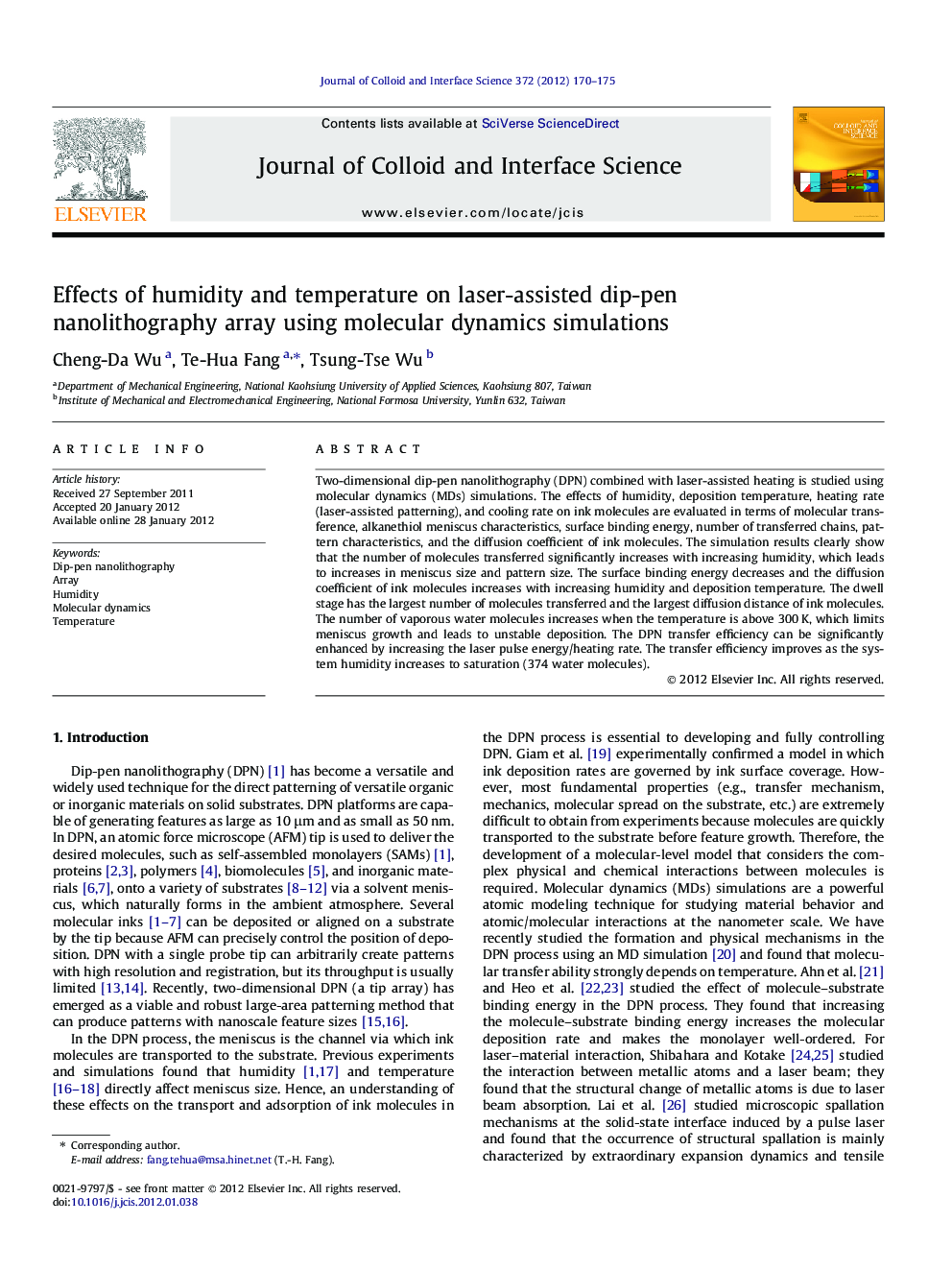| کد مقاله | کد نشریه | سال انتشار | مقاله انگلیسی | نسخه تمام متن |
|---|---|---|---|---|
| 608358 | 880580 | 2012 | 6 صفحه PDF | دانلود رایگان |

Two-dimensional dip-pen nanolithography (DPN) combined with laser-assisted heating is studied using molecular dynamics (MDs) simulations. The effects of humidity, deposition temperature, heating rate (laser-assisted patterning), and cooling rate on ink molecules are evaluated in terms of molecular transference, alkanethiol meniscus characteristics, surface binding energy, number of transferred chains, pattern characteristics, and the diffusion coefficient of ink molecules. The simulation results clearly show that the number of molecules transferred significantly increases with increasing humidity, which leads to increases in meniscus size and pattern size. The surface binding energy decreases and the diffusion coefficient of ink molecules increases with increasing humidity and deposition temperature. The dwell stage has the largest number of molecules transferred and the largest diffusion distance of ink molecules. The number of vaporous water molecules increases when the temperature is above 300 K, which limits meniscus growth and leads to unstable deposition. The DPN transfer efficiency can be significantly enhanced by increasing the laser pulse energy/heating rate. The transfer efficiency improves as the system humidity increases to saturation (374 water molecules).
Figure optionsDownload high-quality image (50 K)Download as PowerPoint slideHighlights
► The number of molecules transferred increases significantly with increasing humidity.
► The number of transferred ink molecules and their diffusion ability are highest at the dwell stage.
► The transfer efficiency of the DPN process improves as the system humidity increases to saturation.
► Vapor water molecules limit meniscus growth for temperatures above 300 K.
Journal: Journal of Colloid and Interface Science - Volume 372, Issue 1, 15 April 2012, Pages 170–175